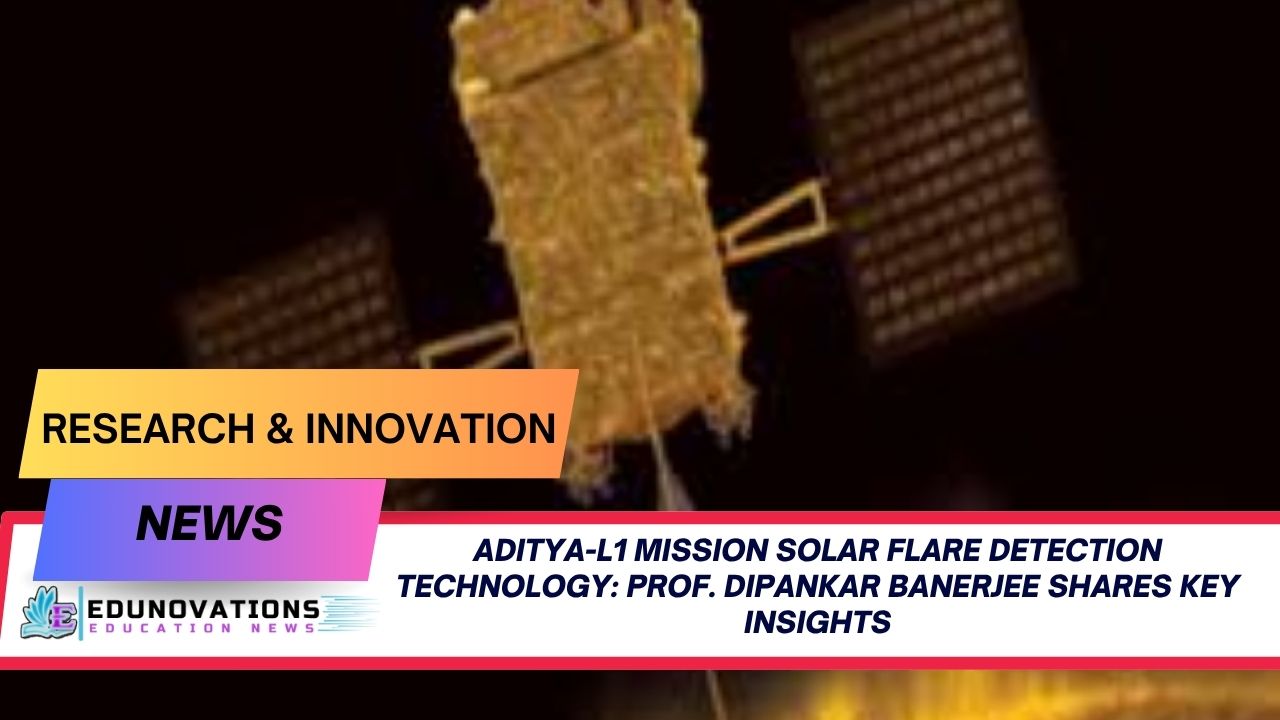Explore how the Aditya-L1 mission solar flare detection technology advances space weather research, with insights from Prof. Dipankar Banerjee, Vice Chancellor, IIST.
Aditya-L1 Mission Solar Flare Detection Technology: Revolutionizing Space Research
The Indian Institute of Space Science and Technology (IIST) continues to push the boundaries of space research under the visionary leadership of Prof. Dipankar Banerjee, Vice Chancellor of IIST. In a detailed interview, Prof. Banerjee shed light on the Aditya-L1 mission solar flare detection technology, a crucial initiative positioned at the Lagrange-1 point, aimed at continuous solar monitoring.
The Aditya-L1 mission has already played a pivotal role in detecting numerous solar flares and analyzing the early phases of significant solar explosions. Equipped with advanced instruments like the coronagraph, it provides unprecedented real-time data on solar activity. This data is openly accessible to the global scientific community, enabling better prediction of space weather, which is essential for safeguarding satellites, communication networks, and future human space exploration.
Understanding Space Weather with IIST Research
Prof. Banerjee emphasized that the mission’s datasets are integral for predicting potential disruptions caused by solar storms. By conducting workshops and training programs, IIST ensures that students and researchers can effectively interpret and utilize this data. This approach is critical for fostering a new generation of space scientists capable of leveraging IIST space weather research and solar observations for innovative solutions.
Collaborative efforts between multiple observatories worldwide ensure a comprehensive understanding of solar phenomena. These partnerships enhance the predictive capabilities of space weather models, providing critical insights for both scientific research and technological applications.
Prof. Dipankar Banerjee: Insights into Solar Physics
As a renowned expert in solar physics, Prof. Banerjee highlighted the importance of observing the Sun’s activity in unprecedented detail. He shared how Prof Dipankar Banerjee IIST solar physics insights help researchers understand the mechanisms behind solar flares and coronal mass ejections (CMEs), which can have significant implications on Earth’s space environment.
He also discussed ongoing research in solar energy and its broader applications, emphasizing the role of solar observations in shaping sustainable technologies. IIST’s commitment to fundamental and applied research allows students and faculty to contribute to cutting-edge projects with global relevance.
Collaborative Missions: India-Japan LUPEX Initiative
Another significant highlight of the interview was the joint India-Japan LUPEX mission collaboration details, which aims to explore lunar polar regions. Prof. Banerjee explained how collaborative missions enhance scientific knowledge and technological capabilities. These international partnerships strengthen India’s position in global space research while offering students exposure to advanced interdisciplinary projects.
By combining expertise from multiple countries, the LUPEX mission is expected to yield high-quality data on lunar geology and potential resource utilization, laying the groundwork for future space exploration missions.
Training and Workshops: Building Future Space Scientists
Prof. Banerjee also elaborated on IIST’s emphasis on practical training. The institute organizes various workshops and data analysis programs where students learn to interpret solar observations effectively. The hands-on experience provided by IIST space science workshops and data analysis programs is vital for preparing the next generation of space researchers.
These programs include modules on space instrumentation, data processing, and simulation techniques, offering students the opportunity to work with real mission data. By integrating theoretical knowledge with practical applications, IIST ensures its graduates are well-equipped to tackle challenges in space science and technology.
Life on Other Planets and Future Research
Addressing questions about life beyond Earth, Prof. Banerjee noted that while current research focuses on understanding solar activity and its impact on Earth, it also indirectly contributes to astrobiology. Insights from Aditya-L1 mission solar flare detection technology help model planetary atmospheres and assess habitability conditions on other planets.
Additionally, the Vice Chancellor highlighted the importance of continuous solar observations in understanding climate change, space radiation hazards, and renewable energy potential. These insights not only benefit scientific research but also have practical applications in technology and policy-making.
Advancing Education Through E-E-A-T Compliance
IIST maintains a high standard of educational content that adheres to Google’s E-E-A-T (Expertise, Authoritativeness, Trustworthiness) principles. By making mission data open-source and encouraging international collaboration, the institute ensures that its research is credible, authoritative, and impactful.
Students, educators, and researchers can access various internal resources, such as NCERT courses, current affairs, and NCERT notes, to complement their understanding of space science. External partnerships, such as with Mart Ind Infotech, further reinforce IIST’s commitment to applied research and practical solutions.
Key Takeaways from the Interview
- The Aditya-L1 mission solar flare detection technology is central to monitoring solar activity and predicting space weather.
- Open-source data from IIST enables global collaboration and research.
- IIST space weather research and solar observations enhance our understanding of solar phenomena.
- Prof Dipankar Banerjee IIST solar physics insights guide both research and education initiatives.
- International missions like India-Japan LUPEX mission collaboration details expand scientific knowledge.
- IIST space science workshops and data analysis programs provide hands-on learning opportunities for students.
Toppers Use Mind Maps to score more than 95%
NCERT Class 11th Commerce Mind Maps
Add to cartOriginal price was: ₹999.00.₹199.00Current price is: ₹199.00.NCERT Class 12th Chemistry Mind Maps
Add to cartOriginal price was: ₹199.00.₹75.00Current price is: ₹75.00.NCERT Class 12th Commerce Mind Maps
Add to cartOriginal price was: ₹999.00.₹199.00Current price is: ₹199.00.NCERT Class 12th Science Mind Maps
Add to cartOriginal price was: ₹999.00.₹199.00Current price is: ₹199.00.NCERT Mind Maps For Class 10th
Add to cartOriginal price was: ₹999.00.₹199.00Current price is: ₹199.00.
Purchase Today
FAQs
- What is the Aditya-L1 mission solar flare detection technology?
It is India’s dedicated solar observatory mission designed to monitor solar activity and predict space weather. - How does IIST contribute to space weather research?
Through IIST space weather research and solar observations, including workshops, open-source data analysis, and collaborative programs. - What are Prof Dipankar Banerjee IIST solar physics insights?
They are expert interpretations and studies on solar flares, CMEs, and their impact on Earth and space technologies. - What is the India-Japan LUPEX mission?
A joint lunar exploration mission aimed at understanding lunar polar regions and potential resource utilization. - How can students participate in IIST space science programs?
By attending IIST space science workshops and data analysis programs, which include hands-on training with real mission data. - Is the Aditya-L1 mission data accessible to global researchers?
Yes, all data from the mission is open-source to facilitate international research collaborations. - Why is solar flare detection important?
It helps predict space weather, protecting satellites, communication systems, and human space missions. - Does IIST collaborate with external organizations?
Yes, including international agencies and technology partners like Mart Ind Infotech for applied research. - How does solar observation benefit climate studies?
Data from the Aditya-L1 mission supports modeling of space radiation and its impact on Earth’s climate. - Where can one access related NCERT educational resources?
Through NCERT courses, current affairs, notes, and mind maps.














